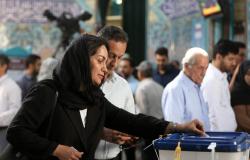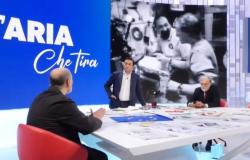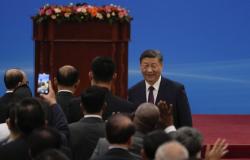Three long border crossings by North Korean patrols the 38th Parallel in the last two weeks. From the southern side the Southern outposts fired warning shots. Rapid retreats of the northerners, who had entered only for about twenty meters beyond the Military Demarcation Line (MDL), the line where the Korean War stopped in 1953. The Seoul command reported on June 18 that several Northern sappers had been there torn apart by the accidental explosion of mines which they were placing in the Demilitarized Zone (DMZ).
The strip of no man’s land is covered by vegetation and in the Southern assessment, some Northern soldiers may have crossed the border by mistake, without realizing it. But the episodes repeat themselves with disturbing frequencyand and satellite images or long-distance shooting with telephoto lenses show that North Korean sappers are doing work: bridges over streams, anti-tank ditches, advancement of firing and control positions.
What’s going on? Why now, when Kim Jong-un has just signed a mutual aid pact with Putin “in case of aggression” and the Tsar promises (threatens) to provide prohibited technology and more advanced weapons for North Korea’s weapons industry?
Bill Clintonafter having scanned the no man’s land on the 38th Parallel with binoculars he had called it “the scariest place in the world.” It is the best place for an American president to demonstrate courageous determination for the defense of the free world, climbing onto an observation post guarded by the United Nations contingent that has still been deployed in the area for seventy-one years Panmunjom (the village where the ceasefire was signed on 27 July 1953).
It is the space of the absurd. Starting from its name in international language: DMZ, Demilitarized Zone. How can you call a strip 4 kilometers wide and 248 kilometers long that contains minefields with at least 2 million devices buried and ready to explode “Demilitarized”barbed wire, anti-tank walls and is guarded on the edges by hundreds of thousands of soldiers and artillery positions?
The way in which the 38th Parallel entered the history of Korea is also surreal, like a mortal wound. It was insummer of 1945when Americans and Soviets discussed the future of the nation freed from the yoke of Japan.
Washington was in a hurry: the Soviets had just declared war on the already defeated Japanese empire and Stalin could have occupied the entire peninsulabecause the closest American forces were a thousand kilometers away, on Okinawa.
Two US Army officers sent to Seoul with little knowledge of the place they were tasked with defining the issues with the now almost former Soviet allies areas of mutual influence, like in Germany. It was August 14, 1945, the day Japan surrendered after the atomic destruction of Hiroshima and Nagasaki. Colonels Dean Rusk and Charles Tic Bonesteel they found a number of National Geographic with a beautiful map of the peninsula and drew a line along the 38th Parallel. A division «that It made no logical sense in the history of Korea, neither geographically nor economically,” Rusk later admitted in his titled memoirs As I saw it (How I saw it).
«Neither I nor Tic were experts in that area, we worked under great pressure, it seemed to us that the capital Seoul should be included in the American sector, we knew that our military command did not want an occupation area that was too large to manage. Looking at the map on the National Geographic We looked for a dividing line just north of Seoul, but couldn’t locate a geographically natural one. Instead we noticed the 38th Parallel and decided to propose it.” Afterwards, Dean Rusk became Secretary of State of President Kennedy.
It should have been anyway a “temporary solution”. Moscow accepted without objection and established in its sector a Stalinist regime led by the then unknown Kim Il Sung. Attempts to reunify the two occupation zones failed. Kim founded the regime of the Democratic People’s Republic of Korea (inherited upon his death by his son Kim Jong-il and then by his grandson Kim Jong-un). Seoul became the capital of the Republic of Korea.
At dawn on June 25, 1950, Kim Il Sung unleashed aggression against the South. Historians remember that even the communist (or rather Stalinist) invasion was the result of a certain superficiality on the American side. In January, speaking at the Washington Press Club, US Secretary of State Dean Acheson forgot to include South Korea in the “American defensive perimeter in the Pacific”. Kim took this as the green light for the adventure. It was Stalin who gave his consent to the invasion, for many convoluted reasons. AND Mao Zedong sent in his army of fake Chinese volunteers in the war that lasted three years.
It’s in the middle the case of vote in the Security Council on sending UN peacekeepers to defend South Korea: it was missing the Soviet ambassador who officially boycotted the sessions in protest against the failure to include communist China among the Big 5 (the seat then belonged to Chiang Kai-shek’s China, based in Taiwan). Another inexplicable Soviet mistake, or perhaps a failed trap.
The schizophrenic madness of the conflict has inspired great literature and cinema. James Salter, who was an American Air Force pilot, told in The Hunters (For gloryin the Italian version of Guanda) of how between 1950 and 1953, to save the South the US Air Force dropped 635,000 tons of bombs on the North, plus another 32,557 tons of napalm (in the entire Pacific theater during World War II they used less, 503,000 tons). In the spring of 1953, American pilots reported that there were no longer any “useful” targets to be found in the North: «There is no longer one stone upon another in the cities».
In 2016, during a trip to Pyongyang for the Courier, I asked an old North Korean woman what the war was: «I can’t find the words. I can’t tell you what those sounds of bombs destroying homes, killing people, were like. For me the sound of war is that of our slippers sliding in the dark while we were fleeing from the planes.”
Three million soldiers and civilians dead ultimately, a tenth of the peninsula’s population. And the two armies found themselves more or less in the same starting positions. Not exactly on the line of the 38th Parallel, but on the positions on which they had entrenched themselves, a little further south or north where the Demilitarized Zone was established.
When it came to ceasefire, 27 July 1953, the situation still had to be “provisional”, like the blue barracks of Panmunjom. Now in the Village of Truce (never became peace and the Two Koreas are technically still at war) there are concrete buildings from where enemies peer at each other with binoculars.
In 2019 Donald Trump was the first and only American president to take a couple of steps over the curb of concrete marking the border at Panmunjom. He shook hands with Kim Jong-un. But the negotiation failed. The frontier of the absurd has closed again. This year, Kim proclaimed that South Korea is “the irreconcilable enemy” and “will be annihilated.”
Now that North Korea has long-range ballistic missiles and rocket launchers, moving infantry and tanks south of the 38th Parallel would not be necessary to start a war.
How then to interpret the movements of patrols beyond the Military Demarcation Line? By placing new mines, digging ditches and raising walls (as satellite images also indicate), Kim Jong-un is pursuing a political objective. In January, the Marshal ordered the Constitution of the Democratic People’s Republic of Korea to be reformed (the official name from North Korea) to let us sign up that «South Korea is irremediably hostile, our first enemy».
Basically, what Kim wanted to communicate that all dialogue for reconciliation with Seoul is over. In his vision, there is no longer national homogeneity between the Two Koreas, the 38th Parallel has dug a furrow of unbridgeable hatred. “The expressions ‘northern half’, ‘peaceful unification and great national unity’ must be erased from our law and our language.” The dictator wants the Constitution to contain the aspiration to “completely occupy and subjugate the South, to incorporate it into the territory of the democratic Republic”.
Rhetoric? Vladimir Putin, whom Kim now calls “our dearest and most honest friend”, after receiving five million North Korean shells, promises to send more sophisticated weapons to Pyongyang. Analysts are thinking of launch systems for ballistic missiles, technology for military satellites, assistance for the construction of submarines that could allow the Marshal to attack from the ocean.
This “brotherhood in arms” serves Putin to distract attention from his war in Ukraine, with the nightmare of another front in Asia. And the Tsar’s support could convince the Marshal to venture into “limited” war actions that could get out of hand. The risk is that Kim repeats his grandfather’s gamble, with different and more devastating tactics and means.





